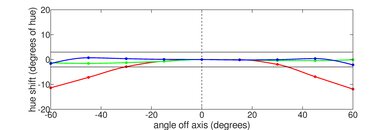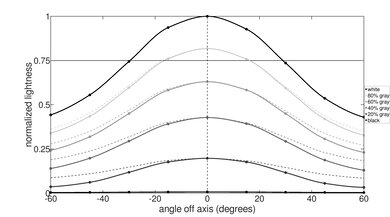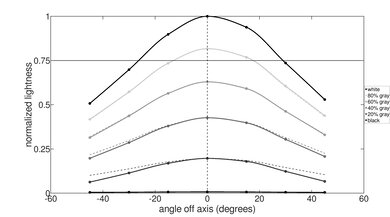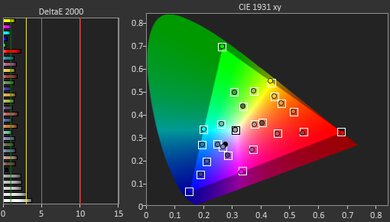The Apple MacBook Air 13 (2022) is a premium ultraportable laptop. It's Apple's entry-level laptop and the successor to the Apple MacBook Air 13 (M1, 2020). This 2022 model has many improvements over its predecessor, including a newer M2 SoC (System on Chip), a slightly larger display, a redesigned chassis, a 1080p webcam, and the addition of the MagSafe charging port. It's available in four colors: Midnight, Starlight, Space Gray, and Silver.
Our Apple MacBook Air 2022 is the base model with an eight-core GPU M2 SoC, 8GB of memory, and 256GB of storage. You can also get a model with a 10-core GPU M2 SoC, 8GB of memory, and 512GB of storage. Regardless of which model you choose, you can upgrade the memory to 16GB or 24GB and up to 2TB of storage.
Our Verdict
The Apple MacBook Air is excellent for school. It's very portable, and its battery lasts easily through a typical day of light use. It has a sharp and bright display, a comfortable keyboard, and a large and responsive touchpad. Its M2 SoC can easily handle general productivity tasks, like text processing, web browsing, and video playback. The SoC's GPU performs reasonably well but loses performance when it gets hot, so it isn't ideal for students in fields like 3D design. Unfortunately, it only has two USB-C ports, and its M2 SoC only supports one external display.
- Well-built and portable.
- Battery lasts through a typical workday of light use.
- Sharp, bright, and colorful display.
- M2 SoC can handle fairly demanding workloads.
- Spacious and tactile keyboard.
- Large haptic touchpad.
- Only two USB-C ports.
- M2 SoC can only support one external display.
The Apple MacBook Air is mediocre for gaming. Although the M2 SoC's CPU is very capable, its GPU can't handle graphically-intensive games, so you'll have to play at a lower resolution or low settings to achieve playable frame rates. Also, few games have been optimized for the ARM-based SoC, meaning performance can vary a lot from one game to another. The display has a slow response time, causing noticeable ghosting, and it doesn't support variable refresh rate to reduce screen tearing. The memory and storage aren't user-replaceable, meaning you can't upgrade the components later to improve performance or increase storage space.
- M2 SoC can handle fairly demanding workloads.
- Spacious and tactile keyboard.
- Silent due to fanless design.
- Few games optimized for Apple silicon.
- GPU performance drops when it gets hot.
- Display has a slow response time and no VRR support.
- Memory and storage aren't user-replaceable.
- Only two USB-C ports.
The Apple MacBook Air is good for media consumption. It's easy to carry around due to its thin and light design, and its battery lasts about seven hours of video playback, enough time to get through a couple of full-length movies. The speakers get reasonably loud and sound full and well-balanced with a good amount of bass. The display is sharp, bright, and color-accurate; however, blacks look gray in dim settings as it's an IPS panel with no local dimming.
- Well-built and portable.
- Long battery life.
- Sharp, bright, and colorful display.
- Full sRGB and DCI P3 coverage.
- Speakers sound well-balanced.
- Blacks look gray in dim settings.
- Image looks washed out from the side.
The Apple MacBook Air's M2 SoC performs well, but it isn't ideal for demanding, professional workloads because its performance drops significantly when it gets too hot. It also has a limited port selection with only two USB 4/Thunderbolt 3 ports and can only support one external display. On the upside, it has a comfortable keyboard and a color-accurate display with full sRGB and DCI P3 coverage.
- M2 SoC can handle fairly demanding workloads.
- Full sRGB and DCI P3 coverage.
- Spacious and tactile keyboard.
- Silent due to fanless design.
- GPU performance drops when it gets hot.
- Memory and storage aren't user-replaceable.
- Only two USB-C ports.
- M2 SoC can only support one external display.
The Apple MacBook Air is great for business use. It has a sturdy aluminum chassis and is very portable, thanks to its thin and light design. Its M2 SoC is powerful enough to handle most productivity tasks, like text formatting, spreadsheets, and presentations, and you can even do some occasional photo and video editing. The battery lasts a little more than 10 hours of light use, so you likely won't need to bring the charger. The display is sharp and bright, the keyboard is comfortable to type on, and the touchpad is large and responsive. The webcam's video quality is excellent, and the microphone sounds loud and clear. Sadly, it only has two USB-C ports and can only output a video signal to a single external display.
- Well-built and portable.
- Battery lasts through a typical workday of light use.
- Sharp, bright, and colorful display.
- M2 SoC can handle fairly demanding workloads.
- Spacious and tactile keyboard.
- Large haptic touchpad.
- Memory and storage aren't user-replaceable.
- Only two USB-C ports.
- M2 SoC can only support one external display.
Changelog
- Updated Jan 18, 2024: Added mention of the Apple MacBook Pro 14 (M3, 2023) as an alternative with more processing power in the CPU section.
- Updated Dec 07, 2023: Converted to Test Bench 0.8.2.
- Updated Nov 03, 2023: Converted to Test Bench 0.8.1.
- Updated Aug 16, 2023: Added mention of the Apple MacBook Pro 14 (2023) as an alternative with a higher contrast display in the Contrast section.
Differences Between Sizes And Variants
We tested the base model of the Apple MacBook Air (2022) with an M2 SoC (8-core GPU), 8GB of memory, and 256GB of storage. The SoC, memory, and storage are configurable; you can see the available options in the table below.
| Screen |
|
|---|---|
| SoC |
|
| Memory |
|
| Storage |
|
| Color |
|
Our display and performance results are only valid for the configuration we tested. If you come across a different configuration option not listed above, or you have a similar Apple MacBook Air laptop that doesn't correspond to our review, let us know, and we'll update it. Some tests, like black uniformity and color accuracy, may vary between individual units.
You can see our unit's label here.
Popular Laptop Comparisons
The Apple MacBook Air is among the best ultraportables on the market. It stands out for its premium and sturdy build, outstanding performance, and long battery life.
For other options, see our recommendations for the best laptops, the best laptops for college, and the best business laptops.
The Apple MacBook Air 13 (2022) is the successor to the Apple MacBook Air 13 (M1, 2020). The 2022 model is a better device overall, with a more powerful SoC, a slightly larger display, and a better 1080p webcam. The M2 MacBook Air has an additional MagSafe charging port, which frees up one of the USB-C ports, but like the M1 MacBook Air, it can only support one external display.
The Apple MacBook Air 13 (2024) is the direct successor to the Apple MacBook Air 13 (2022). The 2024 model only has a few upgrades, including a slightly faster M3 SoC, Wi-Fi 6E, and support for two external displays, though the latter is only possible with the laptop closed. Apple's M3 SoC also brings new features, like hardware-accelerated ray tracing and AV1 decoding. Battery life is better on the M3 model, especially for video playback.
The Apple MacBook Air 15 (2023) is essentially the same device as the Apple MacBook Air 13 (2022) but with a larger 15.3-inch screen and better-sounding speakers. The 15-inch model's larger chassis helps with thermals, so the keyboard doesn't get as hot, and the SoC doesn't throttle as much under load. It has a larger battery to compensate for its more power-hungry 15-inch screen, but the battery life is only decent at around eight hours of light use, two hours shorter than its 13-inch sibling.
The Apple MacBook Pro 14 (2021) is better than the Apple MacBook Air 13 (2022). The MacBook Pro 14 has a brighter Mini LED display with a higher refresh rate, a wider port selection, a better webcam, and better-sounding speakers. If you need to perform demanding tasks like video editing or 3D rendering for work, it's best to go with the MacBook Pro 14 because its M1 Pro and Max SoCs perform better and maintain higher performance over time. The MacBook Air's M2 SoC can handle some light photo and video editing, but it throttles significantly under load due to the lack of active cooling.
Test Results

The Apple MacBook Air has a sleek, premium-feeling design similar to the Apple MacBook Pro 14 (2021) and Apple MacBook Pro 16 (2021). It has a flatter chassis and thinner bezels than its M1 predecessor, and like the MacBook Pros, it now has a notch to house the camera at the top of the display. It doesn't have any vents, and it's fanless, so you don't need to worry about dust getting into the device over time. It's available in four colors: Midnight, Starlight, Space Gray, and Silver. It comes with a color-matched MagSafe power cord.
The Apple MacBook Air's build quality is outstanding. It has a full aluminum chassis that feels sturdy and premium, with no flex in the display or keyboard deck. The finish is fairly scratch-resistant; however, it picks up fingerprints very quickly, at least for the Midnight color variant. The other color variants don't smudge as easily. The feet feel solid and adhere firmly to the bottom of the laptop.
The Apple MacBook Air has an outstanding hinge. It feels very smooth when opening and closing the laptop, and it's stable, with just enough resistance to keep the screen in place without feeling overly stiff. The screen wobbles a little when typing aggressively, but it's barely noticeable.
The Apple MacBook Air is very portable, thanks to its thin and light design. The power adapter is compact and fits easily into most bags.
The Apple MacBook Air's serviceability is bad. Accessing the internals is easy; you only need to remove four P5 screws and unclip the bottom panel. Once inside, the only replaceable part is the battery since everything else is soldered onto the motherboard. Putting the bottom panel back is a little more challenging due to the way the panel hooks onto the body. If you want a laptop with better serviceability, check out the Framework Laptop 13 (2022).
- Apple MacBook Air 13 (2020) laptop
- 30W power adapter
- USB-C to MagSafe charging cord
- Documentation
- 2x Apple stickers
Note: Models with a 10-core GPU come with a 35W dual USB-C power adapter. If you get an 8-core GPU model, you can get the 35W dual USB-C or a 67W power adapter at an additional cost. Apple doesn't charge extra for the 67W power adapter if you get the 10-core GPU model.
The Apple MacBook Air has a single display option. It's essentially a QHD display with more vertical pixels because it has a 16:10 aspect ratio and extra screen space on each side of the notch. It looks very sharp and provides just enough room for light multitasking. You can hide the notch if it bothers you. Check out the Apple MacBook Air 15 (2023) if you want a larger screen for better multitasking.
The Apple MacBook Air has a good contrast ratio. It's better than its predecessor, the Apple MacBook Air 13 (M1, 2020), but ultimately, it's still an IPS panel and worse than other display technologies like VA and OLED. It isn't an issue when viewing content in a well-lit room, but in darker environments, blacks look grayish. If you want a MacBook with a higher contrast display, check out the Apple MacBook Pro 14 (M2, 2023).
The Apple MacBook Air's display gets bright enough for use in most settings, even outdoors in broad daylight. It also gets very dim to provide a more comfortable viewing experience in dark environments.
The Apple MacBook Air 2022 has excellent reflection handling. Its glossy finish is very effective at reducing the intensity of direct, mirror-like reflections and indirect reflections from bright ambient lighting. Although you can still see some reflections when viewing bright-color content with the screen at max brightness, it isn't distracting. When viewing dark-color content, direct reflections like a lamp or open window during the day are visible, but unlike matte coatings, they don't cause a hazy effect in other areas of the screen.
The Apple MacBook Air 2022 has okay horizontal viewing angles. The image washes out fairly quickly when moving to the side. The picture quality is still good enough to share text documents and other casual content, but it isn't ideal for work that requires perfect accuracy.
The Apple MacBook Air 2022 has okay vertical viewing angles. Again, the image looks washed out when viewed from above or below. You need to look at the screen more or less straight on to see an accurate image.
The Apple MacBook Air's out-of-the-box color accuracy is outstanding. Most color and white balance inaccuracies are minor and hard to spot with the naked eye. The color temperature is only slightly cooler than the standard 6500K target, not enough to make a noticeable difference. The gamma is too high in most scenes, especially at higher brightness levels, making the image appear darker than it should.
The Apple MacBook Air has an outstanding color gamut. It has full sRGB and DCI P3 coverage, the color spaces used in most SDR and HDR content, respectively. Its Adobe RGB coverage is excellent, but still not enough for professional photo editing as it's missing the saturated greens that define Adobe RGB.
The Apple MacBook Air has a great keyboard. It feels spacious and has the same layout as every other MacBook, so if you're already familiar with a MacBook keyboard, it'll be easy to adapt to. The plastic used for the keycaps feels high-quality, and the keys themselves are stable. The keys don't require much force to actuate and provide satisfying tactile feedback; however, they have a very short travel distance, which might cause some fatigue if you're a heavy typer, as it's easy to bottom out. The most notable change from the Apple MacBook Air 13 (M1, 2020) is that the top function row keys are now full-size keys. Typing noise is very low, so you don't need to worry about causing too much noise in a quiet environment like a classroom or office. You can manually adjust the backlight brightness or let the system adjust it automatically according to your ambient lighting.
The Apple MacBook Air has an outstanding touchpad. It's large, smooth, and responsive to all movements and gestures. There aren't any issues with palm rejection or actions like dragging and dropping. It doesn't have physical buttons; instead, it uses haptic feedback to simulate the clicks, allowing you to click anywhere on the touchpad. It also supports Force Touch, meaning it's pressure-sensitive. Depending on the application, a harder press lets you access a secondary function or bring up a contextual menu.
The Apple MacBook Air has great speakers. They get reasonably loud with minimal compression at max volume, and they sound well-balanced, with a good amount of bass and treble extension. Compared to the Apple MacBook Air 13 (M1, 2020), they have more bass but sound a little boxier, likely because the speaker grills are at the back of the keyboard deck and fire towards the screen, while the M1 MacBook Air has up-firing speakers on each side of the keyboard.
The Apple MacBook Air's webcam video quality is outstanding. The image looks detailed, with good color reproduction and proper exposure. The microphone sounds loud and clear, albeit slightly more nasal than the Apple MacBook Pro 14 (2021) and Apple MacBook Pro 16 (2021).
The Apple MacBook Air 2022 has a poor port selection. The two USB-Cs support USB 4/Thunderbolt 3 data transfer speed (up to 40Gbps), USB 3.2 Gen 2 (up to 10 Gbps), DisplayPort, and charging. Unfortunately, although both USB-Cs can output a video signal to an external display, the M2 SoC only supports one external at a maximum resolution of 6K at 60Hz. The MagSafe charging port is a new addition that frees up one USB-C port. The MagSafe plug attaches to the laptop magnetically and detaches easily to prevent the laptop from getting pulled off a table if you trip on the cable. If you need a laptop with a better port selection, check out the LG gram 14 (2023).
We can't confirm which wireless adapter the Apple MacBook Air uses.
The Apple MacBook Air is only available with an M2 SoC. Although there are two M2 SoC options, the CPU portion of the SoC doesn't change; it's only the GPU core count that changes. The M2's CPU has four performance cores and four efficiency cores, regardless of which one you choose. The most notable changes from the M1 to the M2 SoC are the increased memory bandwidth (up to 100GB/s) and the addition of dedicated video encoders and decoders to help with tasks like video editing. If you shoot videos in ProRes, there are also dedicated ProRes encoders and decoders. If you need more processing power for demanding workloads, check out the Apple MacBook Pro 14 (M3, 2023).
For the GPU, you have two options: an 8-core GPU or a 10-core GPU. The performance difference between them isn't significant. For most people with a light workload like text processing, web browsing, and video playback, the 8-core GPU is powerful enough to provide a smooth experience. The 10-core GPU helps a little bit in more demanding tasks like video editing, although for video editing, it's the video encoders and decoders that do most of the heavy lifting.
You can configure the Apple MacBook Air with 8, 16, or 24GB of memory. 8GB is enough if you only perform light productivity tasks, but if you plan on editing photos or videos, it's best to go with 16GB or 24GB. The memory isn't user-replaceable, so you have to get the configuration that best suits your needs upfront.
You can configure the Apple MacBook Air with 256GB, 512GB, 1TB, or 2TB of storage.
The Apple MacBook Air has an outstanding score in the Geekbench 5 benchmark. The M2 SoC has incredible single-thread performance, beating even the M1 Max SoC in the Apple MacBook Pro 16 (2021) and all recent Intel and AMD CPUs. Its multi-thread performance is also remarkable, but it falls behind CPUs with more cores, like the Intel Core i7-12800H in the Dell Precision 5570 (2022). The M2's GPU performs reasonably well in GPU compute tasks; it's better than most integrated graphics but slower than discrete GPUs like the NVIDIA GeForce GTX 1650. In short, the M2 SoC can handle general productivity tasks like web browsing, text formatting, and video playback, and it can even handle some light photo and video editing. However, it isn't a professional device. If you need to perform demanding tasks for work, you're better off getting a laptop with a more powerful CPU/GPU and active cooling, like the Apple MacBook Pro 14 (2021), the Apple MacBook Pro 16 (2021), or a Windows mobile workstation with a discrete GPU.
The Apple MacBook Air has an outstanding score in Cinebench R23. It can get the job done, but if you're a professional with deadlines, the Apple MacBook Pro 14 (2021) and Apple MacBook Pro 16 (2021) are better options as they can complete renders much faster. You can also get a Windows laptop with an H-series Intel or AMD CPU, like the Dell Precision 5570 (2022) and the ASUS ProArt Studiobook Pro 16 OLED (2021).
The Apple MacBook Air performs well in Blender. Both the CPU and GPU can complete the render quickly, but again, if you're doing 3D rendering work at a professional level, there are better options that can significantly cut down the rendering time, like the Apple MacBook Pros with Apple silicon or Windows laptops with an NVIDIA GPU that supports NVIDIA Optix hardware acceleration.
The Apple MacBook Air scores reasonably well in the Basemark GPU benchmark. The performance is very good for integrated graphics, but it's still behind even entry-level discrete GPUs like the NVIDIA GeForce GTX 1650. Gaming performance will also vary a lot depending on the game since most games haven't been optimized for Apple silicon and need to run through Rosetta 2. Even for optimized games, you likely need to play at a lower resolution or low graphics settings to get playable frame rates. The 10-core GPU will perform better, but not significantly.
The Apple MacBook Air's storage drive performance is excellent. The sequential read speed is slower than the Apple MacBook Air 13 (M1, 2020) because the 256 GB storage variant only uses one chip, whereas the M1 MacBook Air uses two in a RAID array. However, it's still fast enough for general productivity tasks like text formatting and web browsing. The slower speed is only noticeable if you perform demanding tasks that require access to large files or in situations where the system runs out of memory and needs to offload data to the SSD. If the sequential read speed is important for your workload, it's best to get a variant with a 512GB, 1TB, or 2TB SSD. The speed of the SSD may vary depending on the size, as larger SSDs tend to perform better.
The Apple MacBook Air's battery life is great. You can easily get through a typical day of light productivity on a full charge. Video playback consumes more power, but you can still get through a couple of movies and TV show episodes. Gaming, and other demanding tasks like video editing, drain the battery very quickly, so you'll have to use the laptop plugged in most of the time. Battery life varies greatly depending on your usage.
Borderlands 3 runs poorly on the Apple MacBook Air. It's unplayable at 1080p with high settings due to low average frame rates and frequent stutters. It doesn't get much better at low settings. The 10-core GPU model will perform a little better, but the game will still be very choppy.
The performance in Civilization VI is middling. The game is a little choppy at 1080p with high settings, but it gets much smoother at low settings. You might still experience some stutter here and there, but it's playable since this is a strategy game. The turn time is quite long, though. The 10-core GPU model will push slightly higher frame rates, likely closer to 60 fps at high settings.
CS:GO runs very well on the Apple MacBook Air. The 8-core GPU M2 SoC has no problems pushing high frame rates at 1080p with high settings. Motion looks smooth, with almost no stutter at all. The 10-core GPU M2 won't have any issues running this game. Unfortunately, we don't have the 1% and 0.1% data because the software used to capture it doesn't work on macOS.
Shadow of the Tomb Raider runs poorly on the Apple MacBook Air. It's unplayable at 1080p with high settings, and even with low settings, the game is still choppy. The 10-core GPU M2 SoC will perform better, but you'll still experience stutters.
The Apple MacBook Air's keyboard is fairly cool at idle, but it gets hot under load and can be a little uncomfortable as the hottest spot is close to the center of the keyboard. It doesn't make any fan noise because it's a fanless laptop.
The Apple MacBook Air's performance over time is okay. The CPU only throttles slightly under load, but the GPU throttles significantly. The CPU's temperature averages around 87°C (188.6°F) at the end of each benchmark run, but it can get as hot as 108°C (226.4°F) during the run (recorded via TG Pro). The GPU's average temperature is 77°C (170.6°F).









































































